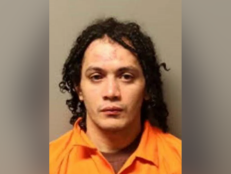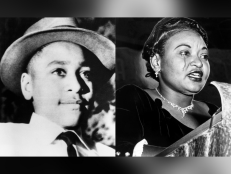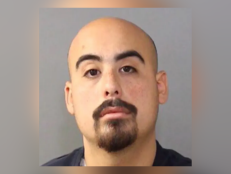The Earth Day Fraud Who Became Known As ‘The Unicorn Killer’
In his journal, Ira Einhorn wrote, “Violence always marks the end of a relationship.”
![Mug shots of Ira Einhorn [Wikimedia Commons]](http://investigationdiscovery.sndimg.com/content/dam/images/investigationdiscovery/crimefeed/legacy/2019/04/Ira-Einhorn-SWikimedia-Commons-E4222019.jpg.rend.hgtvcom.616.411.suffix/1555690548009.jpeg)
Mug shots of Ira Einhorn [Wikimedia Commons]
If there was one certainty about Ira Einhorn, it’s that he loved the spotlight. The man once referred to in the press as a “burly philosopher” was active in the anti-war movement during the Vietnam years, ran for Mayor of Philadelphia in 1971, and took great pride in claiming that he was instrumental in launching the first Earth Day celebration in 1970.
But it was a grisly murder, not his activism or his intellect, that eventually made the man known as “The Unicorn Killer” a household name around the world. His bizarre story was one filled with enough twists and turns that made it feel like the work of a Hollywood screenwriter.
Ira Einhorn was born in Philadelphia in 1940 to a middle-class Jewish family and he later studied and taught at the University of Pennsylvania. Throughout the 1960s, Einhorn became a leading voice in the counterculture movement and has been referred to as “Philadelphia's answer to Abbie Hoffman and Allen Ginsberg.” The Village Voice called Einhorn "indisputably Philadelphia's head hippie," and the city’s “number one freak." He was charismatic and influential, with a wide range of friends and associates from all walks of life.
For years, it has been reported that Einhorn was one of the founders of Earth Day. That narrative has been in the public consciousness for decades, due in part to a famous photo of Einhorn onstage at the podium at the first Earth Day event in Philadelphia on April 22, 1970.
![IRA EINHORN Ira Einhorn at the April 1970 Earth Day celebration in Philadelphia [AP Photo/Temple University]](http://investigationdiscovery.sndimg.com/content/dam/images/investigationdiscovery/crimefeed/legacy/2019/04/AP-Ira-Einhorn-7004010224.jpg.rend.hgtvcom.616.462.suffix/1555692558302.jpeg)
Ira Einhorn at the April 1970 Earth Day celebration in Philadelphia [AP Photo/Temple University]
In reality, Einhorn was asked to leave committee meetings leading up to the initial Earth Day because of his disruptive behavior and he didn’t contribute to the organization of the event in any way. Because of his status in the local environmental community, he was allowed to take the stage, which turned into a 30-minute episode in which Einhorn refused to give up the microphone or vacate the stage.
Two of the original leaders of Earth Day in Philadelphia later wrote, “Much to our dismay, we now find that Einhorn … has been taking credit for initiating or organizing Earth Day. He is not telling the truth. Einhorn, given a small role on the stage at Earth Day, grabbed the microphone and refused to give up the podium for 30 minutes, thinking he would get some free television publicity. We just waited until he had completed his 'act' and then got on to the serious business at hand: the keynote speech of U.S. Sen. Edmund Muskie, author of the landmark Clean Air Act of 1970. Einhorn is a fraud.”
Nevertheless, to this day, stories that Einhorn “founded” Earth Day continue to flourish in the press.
Beyond the activism and the boisterous public persona, there was a darker side to Ira Einhorn. He was a womanizer whose domineering personality would sometimes erupt into violence. On at least two occasions prior to 1977, the hippie guru attacked women who rejected him. In one case he strangled a woman until she was unconscious. In another, he hit a woman over the head with a bottle. In his journal, Einhorn wrote, "Violence always marks the end of a relationship."
By 1977, Einhorn had been in a relationship with a 30-year-old woman from Texas named Holly Maddux for five years. By all accounts, Einhorn dominated Maddux and, eventually, the young woman had enough. Maddux worked up the courage to leave Einhorn, who was furious about her decision.
In September 1977, Einhorn lured Maddux back to his Philadelphia apartment by threatening to throw all of her belongings into the street if she did not come retrieve them. Maddux returned to the apartment, the two were seen at a movie the following night, and then Maddux vanished. Einhorn denied any involvement in Maddux’s disappearance, telling anyone who asked that the woman had gone to a nearby food co-op and never returned.
The Maddux family hired a private investigator to look into the matter. Over the next few months, Einhorn’s downstairs neighbor complained of terrible smells and dark liquid leaking into their apartment. Neighbors also remembered hearing screams and thumps around the time of Maddux’s disappearance.
![Holly Maddux [Getty Images] Holly Maddux [Getty Images]](http://investigationdiscovery.sndimg.com/content/dam/images/investigationdiscovery/crimefeed/legacy/2019/04/Getty-Holly-Maddux-1479906.jpg.rend.hgtvcom.616.822.suffix/1555692592342.jpeg)
Holly Maddux [Getty Images]
Einhorn, in the meantime, enjoyed a fellowship for a semester at Harvard’s Kennedy School of Government. Finally, armed with a search warrant based on the evidence provided by the investigator the Maddux family had hired, the police searched Einhorn’s apartment on March 29, 1979, and found Holly Maddux’s partially mummified body in a trunk in the bedroom closet.
Maddux’s skull had been fractured in at least six places by a blunt object. After 18 months, her decomposed corpse weighed only 37 pounds. The trunk had been packed with styrofoam, air fresheners, and newspapers. It was later revealed that after Maddux’s disappearance, Einhorn asked two teenage girls he had been seeing to help him dump a trunk into the Schuylkill River — the girls flatly refused.
Philadelphia police arrested Ira Einhorn and his bail was set at $40,000. At his bail hearing, respected community members took the stand in his defense, arguing that he wasn’t capable of committing such a ghastly crime. A wealthy socialite from Montreal paid Einhorn’s bail and a trial date was set for the spring of 1981.
In January 1981, Einhorn, fearing that his freedom was at stake, fled to Ireland and assumed a false name. There was a sighting of the fugitive in 1986 but for all intents and purposes, Ira Einhorn had disappeared somewhere in Europe. In 1993, Philadelphia’s District Attorney decided to try Einhorn for murder in absentia.
Einhorn’s attorney argued that Holly Maddux’s body had been planted in his client’s apartment. It took a jury only two hours to find Einhorn guilty, and the judge handed down a life sentence.
The years dragged on and it appeared, to the anguish of the Maddux family, that Einhorn would never be found and justice would never be served. But some investigators never gave up, including the Philadelphia District Attorney's fugitive-and-extradition chief, Richard DiBenedetto, who hunted Einhorn doggedly for 16 years.
DiBenedetto’s persistence paid off and, in June 1997, Einhorn was arrested in the countryside in southwest France, living in a farmhouse under the name of “Eugene Mallon” with a Swedish wife. His French neighbors believed he was a writer. The hunt for Ira Einhorn was over, but the extradition process back to the United States would prove to be long and arduous.
Although Einhorn had not been sentenced to death in absentia in 1993, his lawyers argued that he would face the death penalty if he were extradited to the United States. Legal proceedings dragged on for several years until Einhorn was finally sent back to the U.S. in July 2001. It was the first time in 20 years he had been on American soil. No longer able to hide under an assumed name while living a charmed life in the south of France, Einhorn now had to face the music.
The following video shows Einhorn after losing his extradition battle, ranting to journalists after attempting to dramatically slit his throat. Warning — his injury looks gruesome, although it was apparently not actually that serious, and he was able to walk himself to the ambulance.
Einhorn, now dubbed “The Unicorn Killer” (Einhorn means “unicorn” in German) by the press, stood trial in Philadelphia. He took the stand and claimed that the CIA had murdered Holly Maddux and planted her body in his apartment because he knew too much about about paranormal military research.
In October 2002, Ira Einhorn was found guilty and sentenced to life in prison without parole. The presiding judge called Einhorn ''an intellectual dilettante who preyed on the uninitiated, uninformed, unsuspecting, and inexperienced.''
Today, the 78-year-old man who charmed the counterculture and the mainstream alike and who managed to avoid authorities for 16 years sits in a prison cell in Pennsylvania, knowing he will never again be the toast of the town or the center of attention.
Read more: NBCNews.com, The New York Times, Time, Time (2), Philly Mag, The Daily Pennsylvanian, Muderpedia, Newsweek, Philadelphia Daily News









